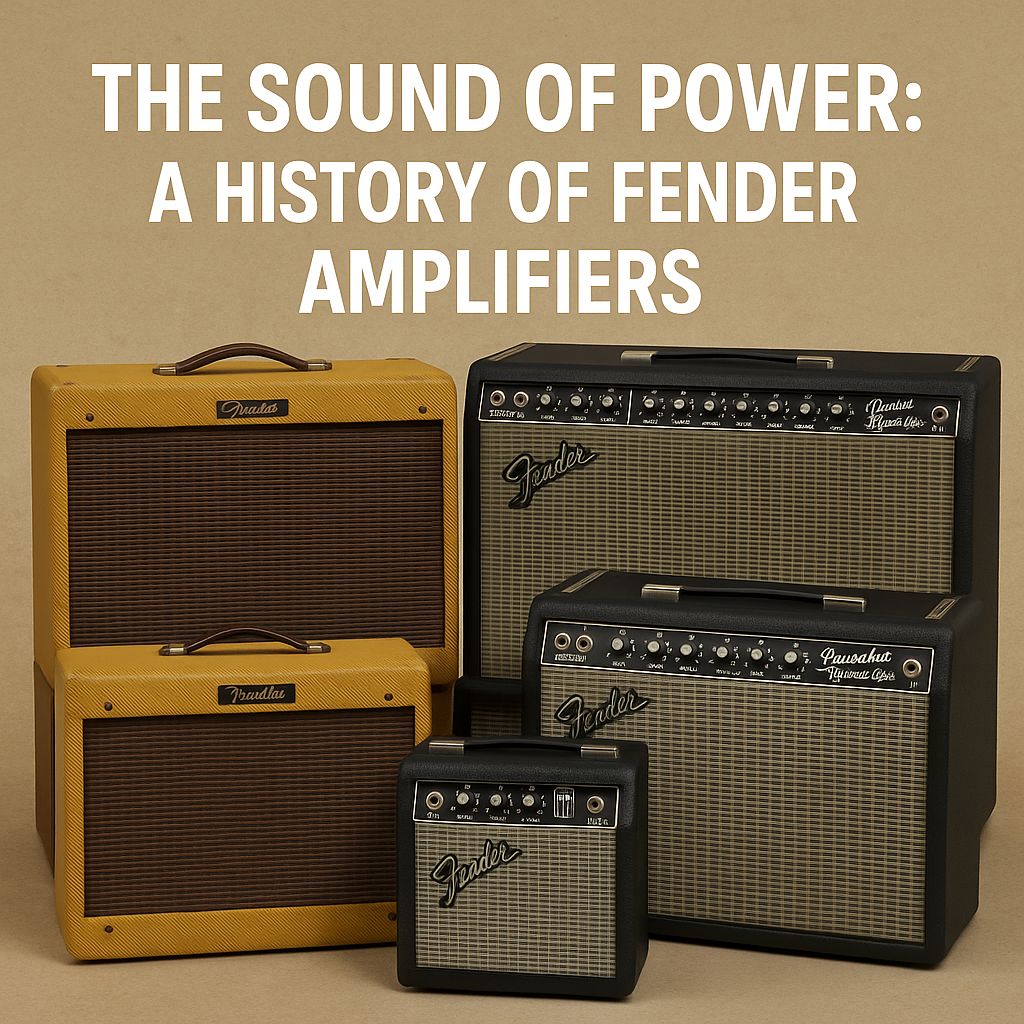Few names are as synonymous with electric guitar amplification as Fender. Since the 1940s, Fender amplifiers have shaped the sound of modern music—be it blues, rock, country, or jazz. With a legacy spanning over seven decades, Fender amps are as much a part of music history as the instruments they support. Let’s dive into the evolution of these iconic amps, highlight some of their most legendary models, and spotlight the artists who helped make them famous.
The Birth of Fender Amps: 1940s–1950s
The story begins with Leo Fender, a self-taught electronics enthusiast who began repairing radios in the 1930s before founding Fender Electric Instrument Company. His earliest amplifiers were designed to accompany lap steel guitars. The first production model, the Woodie, appeared in the mid-1940s and featured simple designs with minimal power.
But the true Fender amp revolution began with the Tweed Series in the 1950s. Covered in a distinctive varnished cotton twill, these amps provided warm, rich tones perfect for the emerging styles of rock ‘n’ roll and blues. Key models included:
-
Fender Deluxe (Tweed Deluxe) – A favourite of blues and early rock guitarists for its warm breakup and responsiveness.
-
Fender Bassman – Originally designed for bass guitar, the 1959 4x10 Bassman became a go-to amp for guitarists and influenced the design of the Marshall JTM45.
The Black Panel Era: 1963–1967
Arguably Fender’s golden age, named for its black control panel, refined the company’s amp lineup with improved circuitry and more headroom. These amps became staples in studios and on stages around the world.
Key models:
-
Fender Twin Reverb – Known for its loud, clean tone and lush reverb, it became a staple for country and surf guitarists.
-
Fender Princeton Reverb – A compact amp beloved for studio work, especially in blues and indie rock.
-
Fender Deluxe Reverb – Versatile and portable, this amp became a favorite for recording and club gigs.
Many Blackface amps featured spring reverb and vibrato circuits, giving them a uniquely expressive voice.
Silverface and CBS Era: Late 1960s–1970s
In 1965, Fender was sold to CBS, and changes were made to amp designs to improve reliability and reduce costs. The Silverface era brought cosmetic updates (aluminum trim and silver control panels) and circuit tweaks that were sometimes seen as diminishing the amps’ tonal quality.
Despite controversy, Silverface models like the Twin Reverb and Super Reverb remained widely used and are now appreciated in their own right, especially for clean tones and pedal platforms.
Modern Era: 1980s–Present
Post-CBS, Fender returned to form under new management in the 1980s. The company reissued vintage designs and launched new series like:
-
Hot Rod Series – Including the Hot Rod Deluxe, these amps offered higher gain and affordable power, ideal for gigging musicians.
-
Blues Junior – A compact, tube-driven amp with vintage tone at an accessible price point.
-
Tone Master Series – Digital modelling amps that faithfully recreate classic Fender sounds with modern conveniences like lightweight design and direct recording options.
Fender also collaborated with artists to produce signature amps and embraced the boutique amp movement with handwired reissues of classics.
Iconic Users of Fender Amps
Over the years, countless legends have used Fender amplifiers to define their sound:
-
Jimi Hendrix – Early in his career, Hendrix used a Fender Twin Reverb before switching to Marshalls.
-
Stevie Ray Vaughan – Often paired his Stratocaster with a Super Reverb and Vibroverb, crafting his soulful Texas blues tone.
-
Eric Clapton – Used a Tweed Twin during the From the Cradle era and inspired the ’57 Custom Twin-Amp reissue.
-
George Harrison – A fan of the Deluxe and Twin Reverb for studio work with The Beatles.
-
John Frusciante (Red Hot Chili Peppers) – Known for using a Silverface Twin Reverb for clean, ambient textures.
The Fender Amp Legacy
Fender amplifiers continue to be a cornerstone of guitar tone. Whether you’re chasing crystal-clean surf tones, gritty blues crunch, or modern versatility, there’s a Fender amp to suit your needs. With a legacy built on innovation and tone, Fender amps remain a timeless choice for professionals and hobbyists alike.









